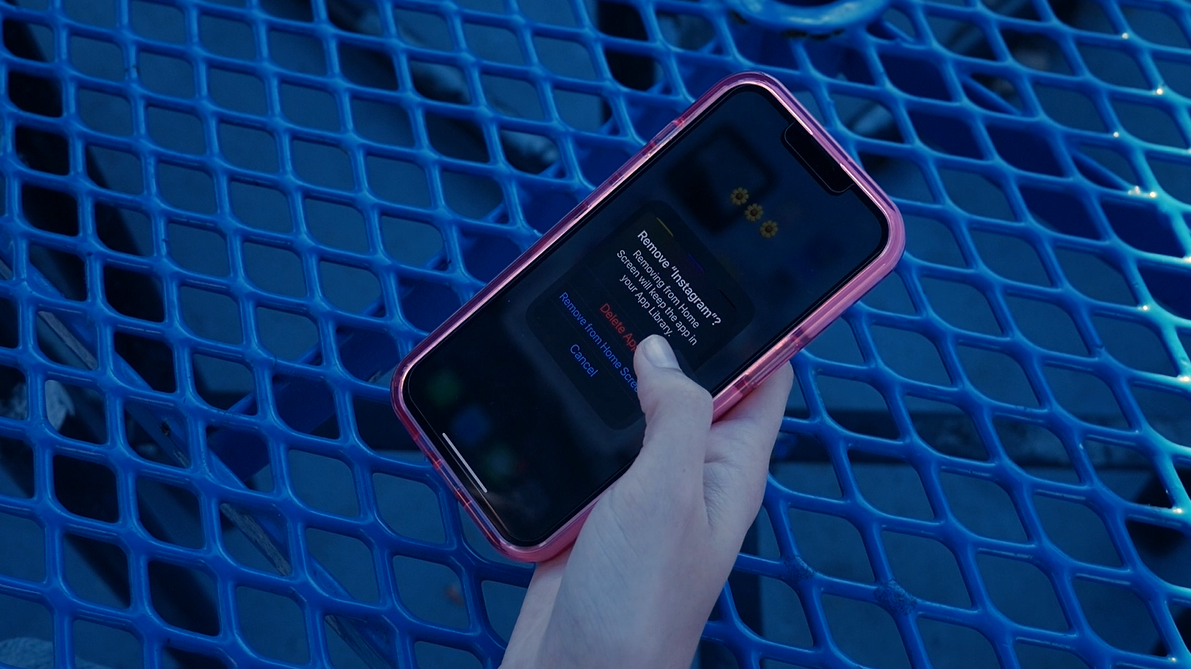Conflict with dress code
January 15, 2020
Sixth-grader Olivia Mollica was playing in the Florida sun during recess when a teacher stopped her and told her to put a sweatshirt on over her spaghetti strap sundress. Confused by her teacher’s orders, Mollica complied and suffered through the remainder of recess in a hot, stuffy sweatshirt. Now as an eighth-grader, Mollica said she is aware of the dress code but doesn’t understand it.
“If people are getting distracted by your clothing and your hair color and things like that, then teach them self-control,” Mollica said. “Tell them that this person’s body isn’t an object, they are a human being. I don’t understand why people would be taken out of school, taken out of their classes, in order to get changed. That just seems ridiculous to me because we are in school to learn not to stare at people’s bodies.”
The growing feminist movement, calling for gender equality, questions the impact that dress codes have on girls. While the United States has expanded its restrictions on dress code during the century -from corset requirements in the 1920s, to Mary Jane shoes in the 1940s, to the liberation of “dresses and skirts only” rule that girls once had to comply to- Americans have posed the question: Does dress code target girls more than boys in inhibiting self-empowerment; or does dress code protect safety, focus and security within school?
“I think it’s really hard for girls to feel confident in what they are wearing,” senior Tyanna Tizol said. “I don’t think anyone understands or sheds light on how self-conscious girls can be. If a girl is confident enough to wear something that other people might see as inappropriate, I think it’s so dumb. Because I see that as empowering.”
Despite student opposition, Assistant Principal Catherine Halbuer said the school district has a dress code in place “so students can create an environment that is conducive for learning.” According to the Brevard Public Schools dress code, “generally, schools have the right to create rules that provide effective public school education for its students.” The campus dress code preamble claims “the standards of appearance for pupils shall ensure that the pupils are clean, neat and properly dressed.” Among its rules, the dress code prohibits attire containing inappropriate content (whether explicit or implied), hats, inappropriately torn clothing and low-cut tops. Pierced jewelry must be confined to the ear, dresses and skirts must reach mid-thigh length and garment straps must be at least 1.5 inches in width. Dress code cannot inflict discrimination toward any gender, race, ethnicity, religion, or sexual orientation.
“The dress code doesn’t say you can wear a tube top or spaghetti shirt under a jacket,” Halbuer said. “It does say you’re not supposed to be wearing them at all. I try to talk to [the student] first. That’s why I always ask kids ‘So what is the policy? What does the dress code say?’ to make sure they are aware of it. They’re cute clothes. They’re just not appropriate for school. I get lots of complaints that we aren’t strict enough. When [parents] see other [children] getting picked up in the bus and car loops, there are [children] with their shorts too short. We do the best we can. We ask the teachers in the first period if there is an issue to try to send the student [to the front office].”
Steven Thomas said that after 13 years of teaching geometry and Algebra 2, he is accustomed to the growing dilemma of enforcing dress code. “As a male teacher I’m in a no-win situation,” Thomas said. “And I don’t appreciate it, because it’s not fair to me, although it is a part of my job. Anything that takes the focus off education and prevents an environment that is conducive to learning is not going to be good. Dress code is there to help ensure that there are fewer distractions. I get it, this is not your generation’s challenge. It’s been a challenge for many generations. And I guess I offer up the idea to anyone who is dressing outside of the dress code, male or female, is what they’re doing to attract attention to them as if they were in a social environment.”
Despite difficulties dress code poses teachers, Thomas said the school system’s expectations are justified.
“The reasons are not sexist, they’re practical,” Thomas said. “Typical girls have more clothing items that are worn that can be adjusted to the point where they can draw attention. Mathematically, that just happens. Why do girls put on makeup? Why do girls do their hair differently? Why do they dress in style? To me it’s to feel good about themselves and to look good to society. It’s not their fault, it’s nobody’s fault. These are our facts and you can’t ignore that.”
While students have the choice what they wear to school -whether it falls into the guidelines of dress code or a staff member deems it appropriate- a key factor to what girls wear to school is the lack of dress code appropriate clothing in stores, according to Holly McKnight, parent to senior Nicholas McKnight and 2018 alumna Lily McKnight.
“As a parent, it’s hard to buy clothes that fit the dress code,” McKnight said. “What’s in style isn’t the dress code. We are sitting there trying to buy things and I’m like ‘Wait a minute, are you allowed to wear that to school?’ I think dressing is [a form of] self-expression. I don’t think it should be anything that would interrupt class or be upsetting to someone.”
Rapidly changing fashion has brought 20th century trends back into schools. The 1960s faced controversy with the mini-skirt, a trend that has recently formed in 2019. Leggings, the craze of the 1980s, also made a comeback in the 21st century. Dress code applies to all genders, however, a common grievance among students and teachers claims that dress code targets girls more than boys.
“My son can wear whatever he wants, as long as his face isn’t covered,” McKnight said. “Whereas with my daughter, I’d have to be like ‘Well, am I going to called to school if you wear that?’ I don’t have a problem with spaghetti straps. It’s Florida, it’s hot. [My son] can wear a tank top, but with [my daughter] we would have to be careful about her tank top.”
Junior Genevieve Archibald was dress-coded in eighth grade for having the underside of her hair dyed “faintly blue.” Archibald compared the dress code to other schools and said that the dress code targets girls more than boys.
“At Mel High for spirit week a boy on swim team only wore a Speedo and didn’t get dress coded,” Archibald said. “But my sister on the same day was wearing a tube top and got dress coded for it.”
Junior Meghan Matthys was dress coded freshman year for wearing a shirt that exposed her midriff. Matthys was told to put a sweatshirt on.
“Girls are targeted for a lot of stuff in this day and age,” Matthys said. “I guess [administration] thinks that girls are trying to attract guys. That’s not true. We are here for an education just like everyone else.”
Freshman Shane Winston said that despite claims that students will get distracted by revealing clothing, he has not found that to be an issue.
“Part of the dress code is trying to look school appropriate,” Winston said. “But there is some leeway and some skin should be allowed. There can be a balance between expression and what’s appropriate.”
Girls are said to be “using the language of female empowerment” in order to “defend their outfit choices,” according to the Washington Post. Protests and backlash have spread across the country as girls argue their right to self-empowerment through what they wear to school.
“Yes, there has to be a dress code,” junior Andrew Catti said. “But it doesn’t have to be so strict. What you are wearing is what you feel. If you feel that it’s empowering, then you should wear that. Some people can see it as demeaning to women. But if you’re wearing a shirt that shows your midriff, and you are confident enough to wear that, God knows I’m not, then you should be allowed to wear that.”
Catti said he disagrees with the claim that girls cannot expose their shoulders in order to avoid distracting boys.
“That contextualizes all of the guys being in one group,” Catti said. “Shoulders should never be a problem, and if guys can get distracted by shoulders, then they have a problem. I promise I’m not in the back of math class looking at a girl’s backbone.”
While the dress code is said to provide both security and comfort to school, students still ask whether restrictions go too far in inhibiting self-empowerment.
“Dress code is a part of your First Amendment right to free speech,” Catti said. “If you want to wear something, then wear it.





















































